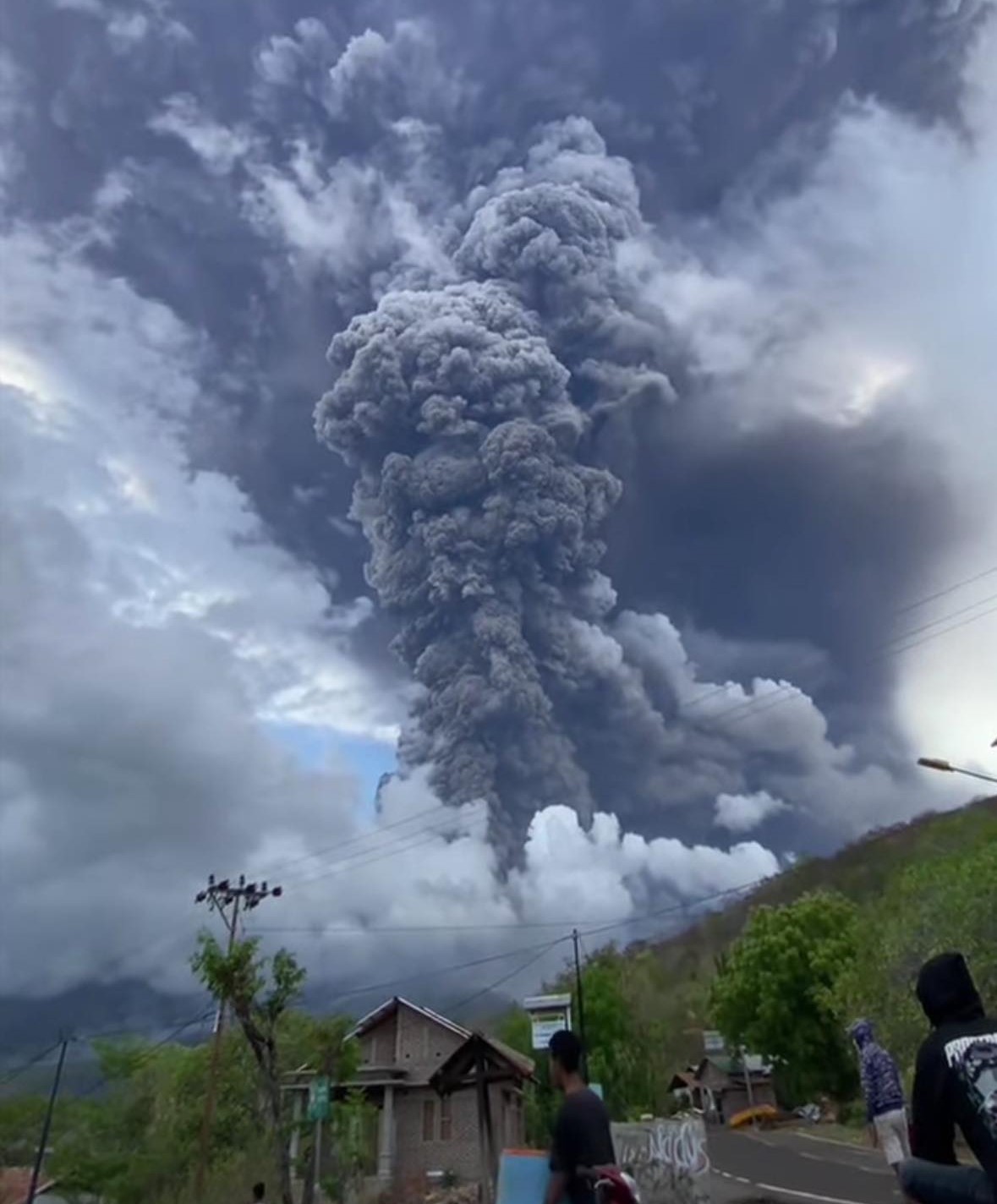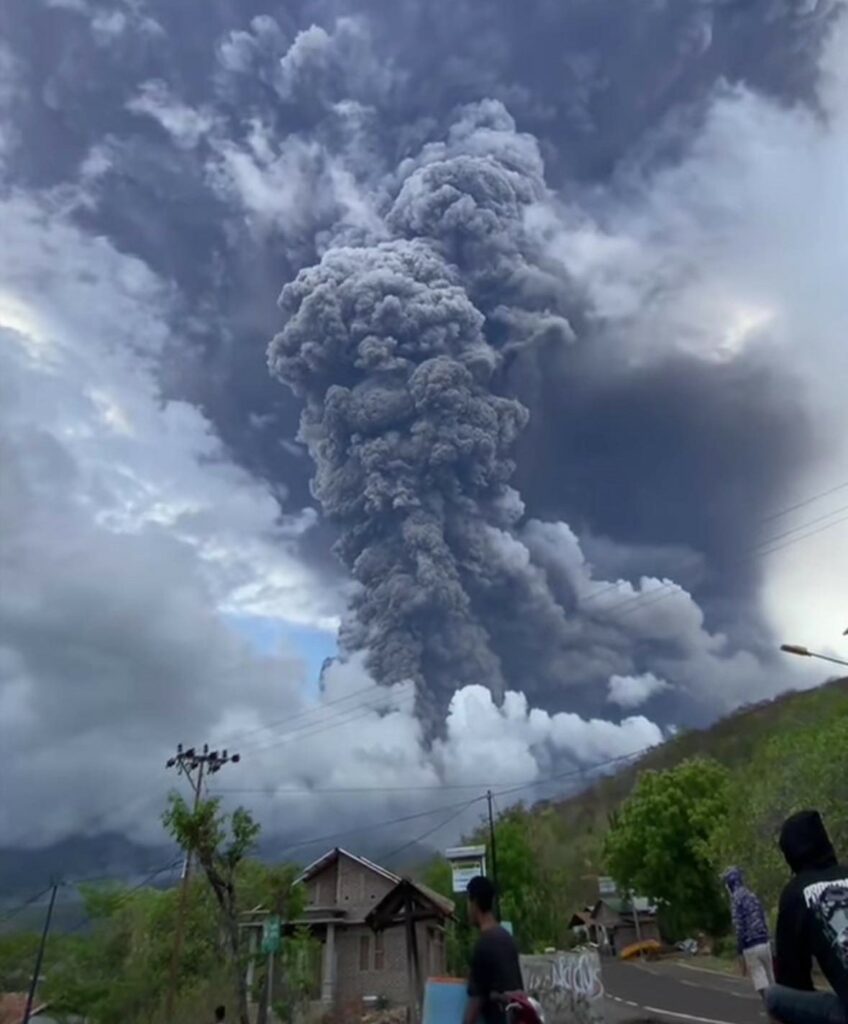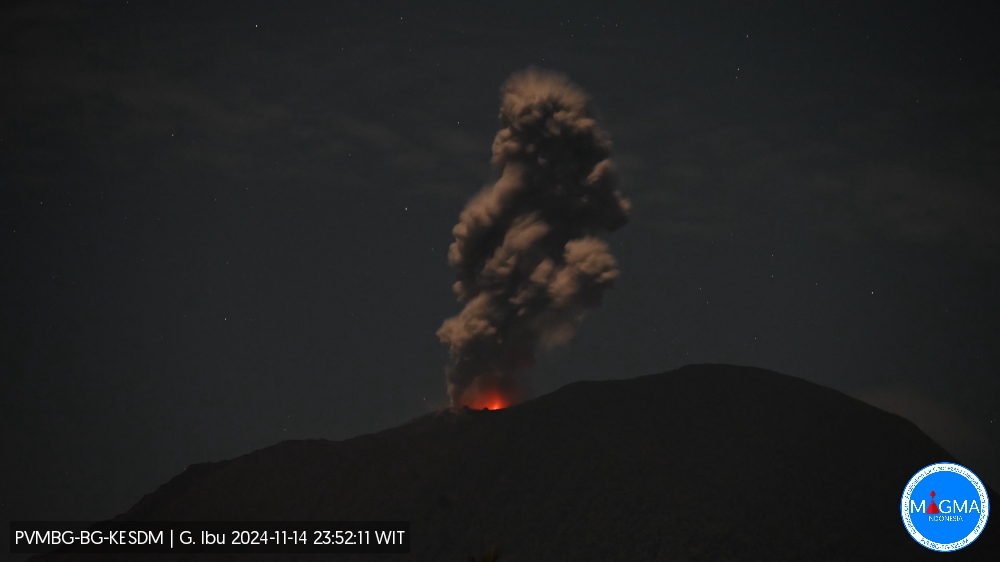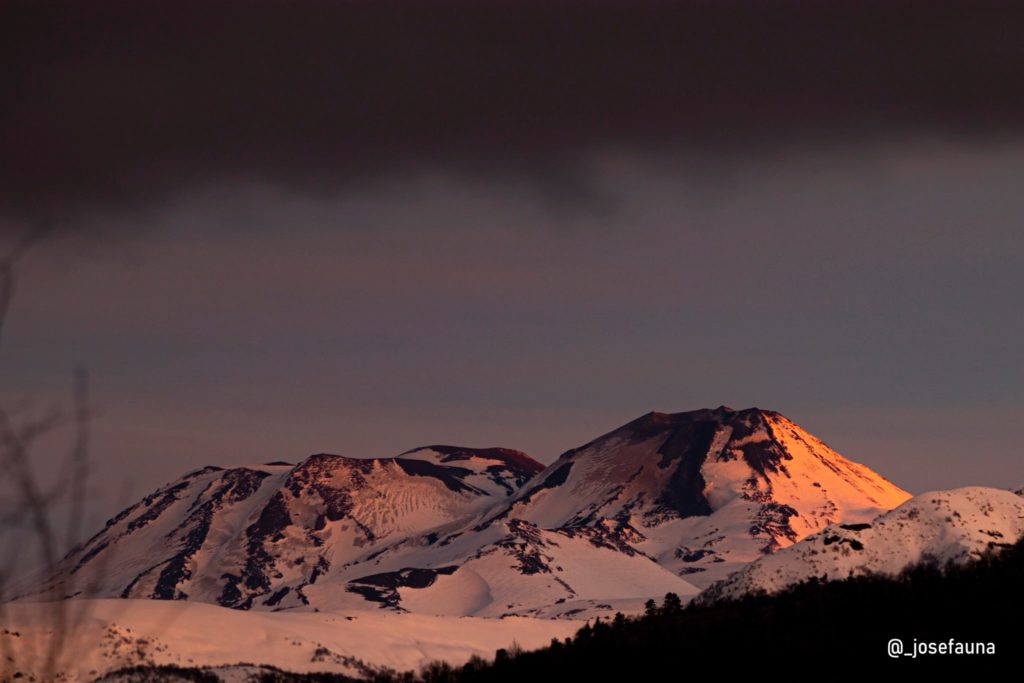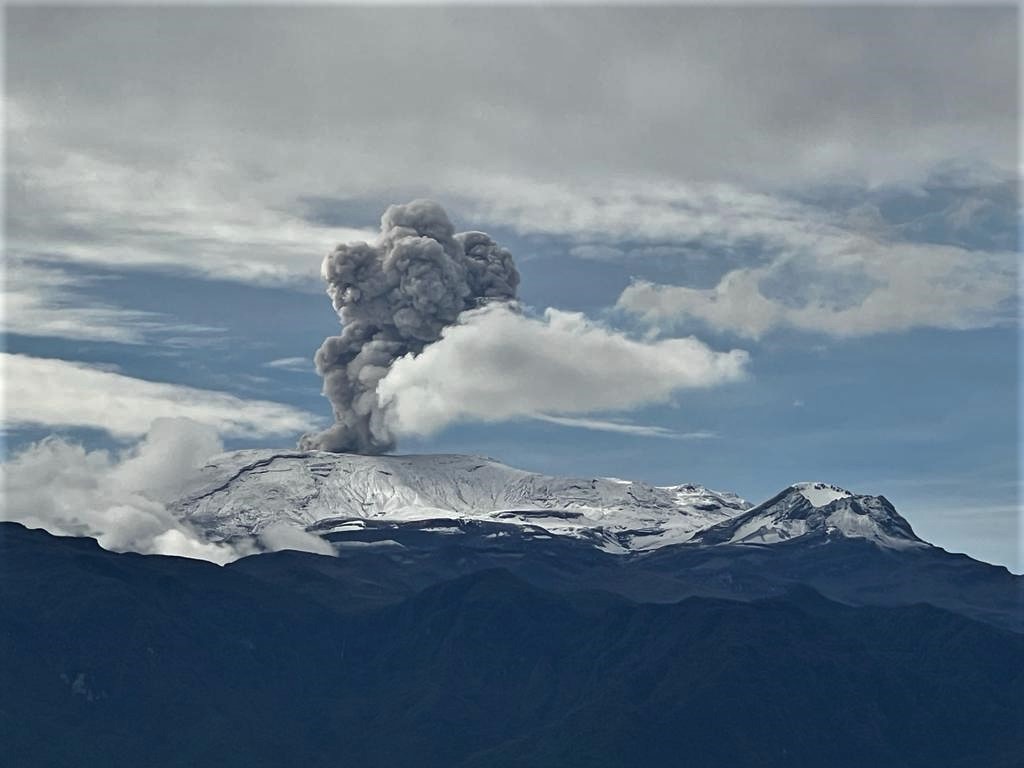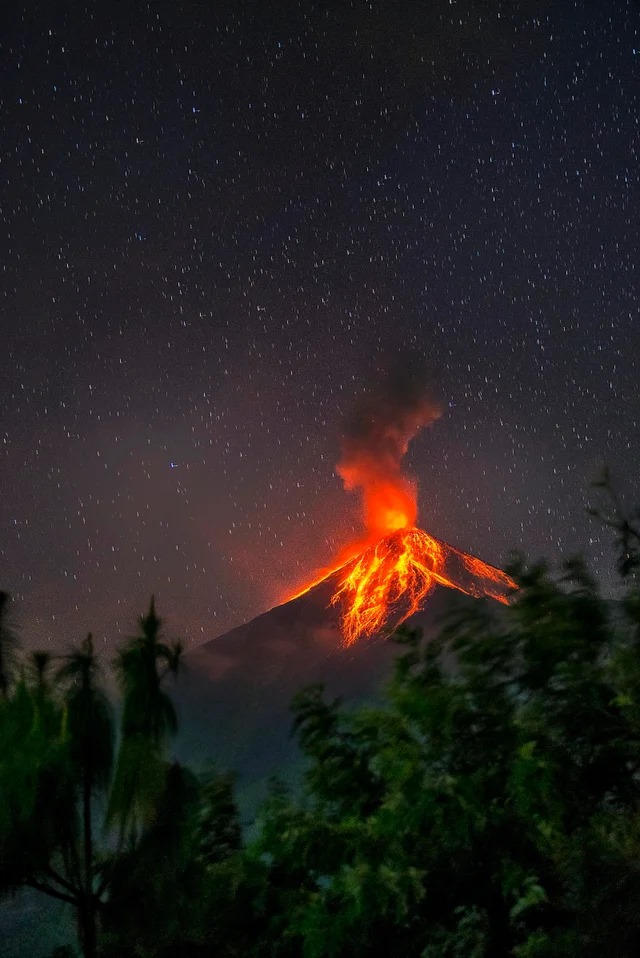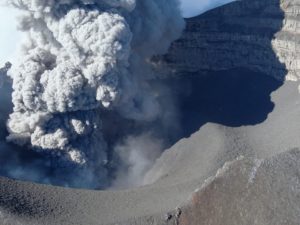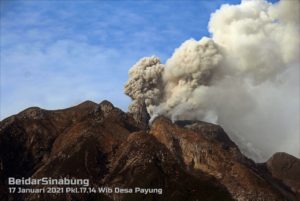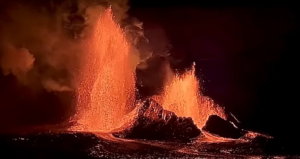November 15 , 2024 .
Indonesia , Lewotobi Laki-laki :
An eruption of Lewotobi Laki-laki occurred on Friday, 15 November 2024 at 08:26 WITA with the height of the ash column observed at ±2,500 m above the summit (±4,084 m above sea level). The ash column was observed to be white to grey in colour with a thick intensity, oriented to the west and northwest. At the time of writing, the eruption was still ongoing.
VOLCANO OBSERVATORY NOTICE FOR AVIATION – VONA
Issued : November 15 ,20241115/0026Z
Volcano : Lewotobi Laki-laki (264180)
Current Aviation Colour Code : ORANGE
Previous Aviation Colour Code : orange
Source : Lewotobi Laki-laki Volcano Observatory
Notice Number : 2024LWK783
Volcano Location : S 08 deg 32 min 20 sec E 122 deg 46 min 06 sec
Area : East Nusa Tenggara, Indonesia
Summit Elevation : 5069 FT (1584 M)
Volcanic Activity Summary :
Eruption with volcanic ash cloud at 00h26 UTC (08h26 local).
Volcanic Cloud Height :
Best estimate of ash-cloud top is around 13069 FT (4084 M) above sea level or 8000 FT (2500 M) above summit. May be higher than what can be observed clearly. Source of height data: ground observer.
Other Volcanic Cloud Information :
Ash cloud moving from west to northwest. Volcanic ash is observed to be white to gray. The intensity of volcanic ash is observed to be thick.
Remarks :
Eruption and ash emission is continuing. Eruption recorded on seismogram with maximum amplitude 37 mm.
Source : Magma Indonésie.
Photo : via Daniel Moyano / FB
Indonesia , Ibu :
An eruption of Mount Ibu occurred on Thursday, 14 November 2024 at 05:22 UTC (14:22 local) with the height of the ash column observed at ± 3000 m above the summit (± 4325 m above sea level). The ash column was observed to be grey with a thick intensity, oriented towards the southwest and west. This eruption was recorded on a seismograph with a maximum amplitude of 28 mm and a duration of 228 seconds.
VOLCANO OBSERVATORY NOTICE FOR AVIATION – VONA
Issued : November 14 , 2024
Volcano : Ibu (268030)
Current Aviation Colour Code : ORANGE
Previous Aviation Colour Code : orange
Source : Ibu Volcano Observatory
Notice Number : 2024IBU1074
Volcano Location : N 01 deg 29 min 17 sec E 127 deg 37 min 48 sec
Area : North Maluku, Indonesia
Summit Elevation : 4240 FT (1325 M)
Volcanic Activity Summary :
Eruption with volcanic ash cloud at 05h22 UTC (14h22 local).
Volcanic Cloud Height :
Best estimate of ash-cloud top is around 13840 FT (4325 M) above sea level or 9600 FT (3000 M) above summit. May be higher than what can be observed clearly. Source of height data: ground observer.
Other Volcanic Cloud Information :
Ash cloud moving to west. Volcanic ash is observed to be gray. The intensity of volcanic ash is observed to be thick.
Remarks :
Eruption recorded on seismogram with maximum amplitude 28 mm and maximum duration 228 second.
Source et photo : Magma Indonésie.
Chile , Nevados de Chillan :
Special Report on Volcanic Activity (REAV), De Nuble region, Nevados de Chillan volcanic complex, November 15, 2024, 00:30 local time (Continental Chile)
The National Geology and Mining Service of Chile (Sernageomin) announces the following PRELIMINARY information, obtained through the monitoring equipment of the National Volcanic Monitoring Network (RNVV), processed and analyzed at the Volcanological Observatory of the Southern Andes (Ovdas):
On Friday, November 15, 2024 at 00:18 local time (03:18 UTC), the monitoring stations installed near the Nevados de Chillan volcanic complex, recorded an earthquake associated with the fracturing of rocks within the volcanic system (VT volcano-tectonic type).
The earthquake characteristics after its analysis are as follows:
TIME OF ORIGIN: 00:18 local time (03:18 UTC)
LATITUDE: 36.895° South
LONGITUDE: 71.338° West
DEPTH: 4.6 km
LOCAL MAGNITUDE: 3.0 (ML)
Observations:
No changes in the seismic behavior of the volcano were recorded after the event.
The volcanic technical alert remains at Green level.
Source : Sernageomin.
Photo : Josefauna . ( 08/2020)
Colombia , Nevado del Ruiz :
Manizales, November 12, 2024, 7:00 p.m.
From the monitoring of the activity of the Nevado del Ruiz volcano, the Colombian Geological Survey (SGC), an entity attached to the Ministry of Mines and Energy, reports that:
During the week of November 5 to 11, 2024, the volcano continued with unstable behavior. Compared to the previous week, the main variations in the monitored parameters were:
– The seismic activity associated with the fracturing of rocks inside the volcanic edifice increased in the number of earthquakes recorded and maintained similar levels in the seismic energy released. The seismic events were located mainly on the northeast, north-northeast, north and northwest flanks and, to a lesser extent, on the other flanks of the volcano and in the Arenas crater. Earthquakes occurred at distances of up to 10 km with a predominance of events at distances of less than 5 km from the crater. The depths of the earthquakes ranged from less than 1 km to 8 km from the summit of the volcano. The highest magnitude recorded during the week was 1.2, corresponding to three earthquakes recorded on November 5 at 09:22 and 13:42, and on November 10 at 03:09, located between 3 and 5 km north-northeast of the Arenas crater, at an average depth of 5 km. These earthquakes occurred during increases in seismic activity recorded on both days. Seismicity related to the activity of the lava dome (protuberance or mound) located at the bottom of the crater also continued to be recorded during the week. The number of earthquakes and their energy levels remained similar.
– Seismicity related to fluid activity inside volcanic conduits decreased in the number of earthquakes recorded and in the seismic energy released. This activity was characterized by seismic signals associated with pulsatile emissions of ash of low to moderate energy, with the exception of the signal recorded on November 5 at 16:28 which had a moderate to high value. Thanks to the cameras used to monitor the volcano and reports from officials of the Los Nevados National Natural Park (PNNN) and residents of the volcanic influence zone, it was possible to confirm several ash emissions. In addition, using thermal imaging cameras (FLIR), changes in the temperature of the emitted material associated with some of these emissions were observed.
– The emission of water vapor and gases into the atmosphere from the Arenas crater continued. Sulfur dioxide (SO2) degassing rates were variable. Since the wind direction did not favor the location of the measuring stations, it was not possible to determine the changes compared to previous weeks, however, from satellite monitoring, generally similar values were obtained, unlike on November 8, the day when a significant increase in this parameter was observed.
– The maximum height of the vertical gas column was 1300 m (measured above the summit of the volcano) on November 11, and in dispersion it was 1600 m on November 10, the latter value was obtained during the emission of ash from 11:41 am. The direction of dispersion of the column showed a predominant trend towards the southeast flank (from northeast to south-southeast).
– During the monitoring of surface activity, from satellite monitoring platforms, several thermal anomalies were detected at the bottom of the Arenas crater with low to moderate energy levels.
Source et photo : SGC
Guatemala , Fuego :
Weather conditions: Partly cloudy
Wind: North-East
Precipitation: 15 mm.
Activity:
A white degassing fumarole is reported at an altitude of 4,200 metres above sea level. Between 8 and 12 explosions of weak to moderate characteristics are generated per hour, which raise columns of gas and ash to heights of 4,300 to 4,700 metres above sea level (14,108 to 4,700 metres above sea level / 15,420 ft), which move southwest for distances of up to 30 km.
At night, incandescent pulses are observed rising between 100 and 200 meters above the crater level, covering the crater area with incandescent rock fragments. Collapses and descents of volcanic material are recorded from the crater rim. A small fall of ash particles could occur on San Pedro Yepocapa, Sangre de Cristo, Palo Verde, El Porvenir, Morelia, Panimaché I and II, Santa Sofía and Los Yucales. In the afternoon and at night, rains could cause lahars to descend into different ravines of the volcano.
Source : Insivumeh
Photo : Massoud Ufo Jorge ( 2023 )

